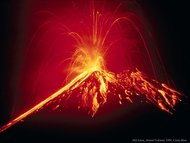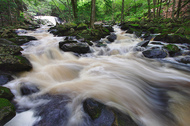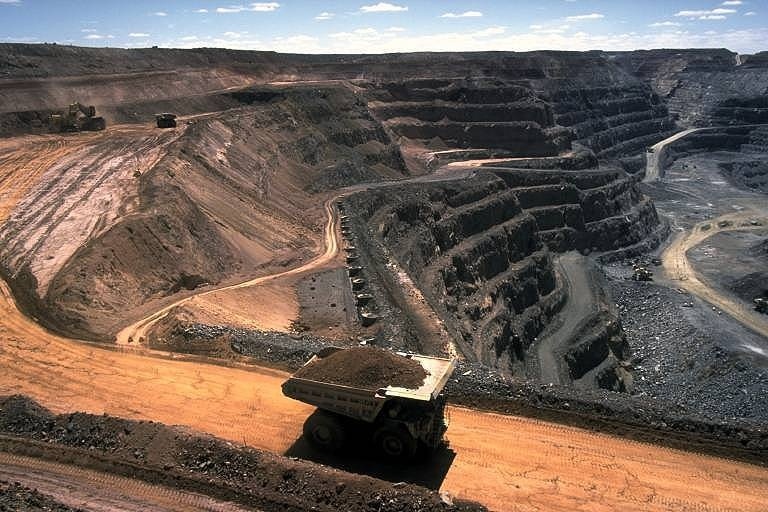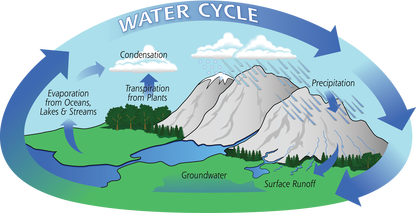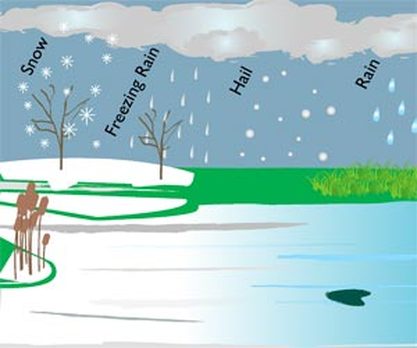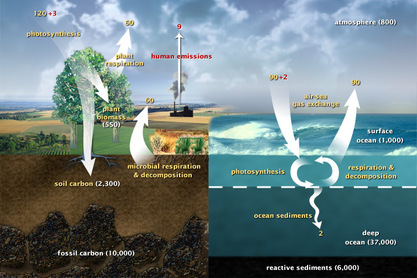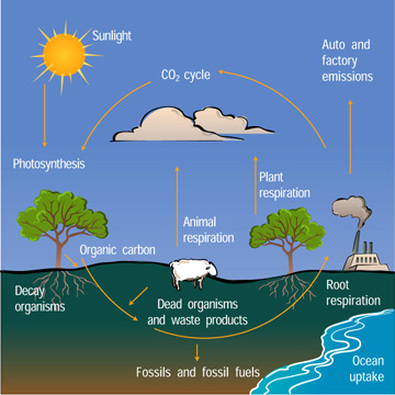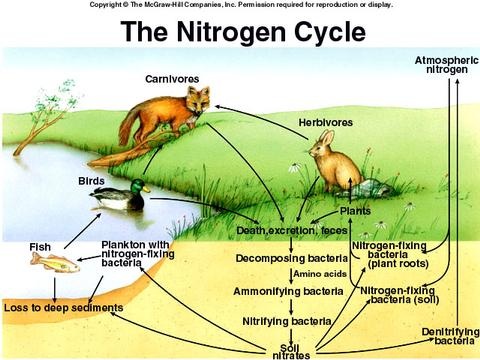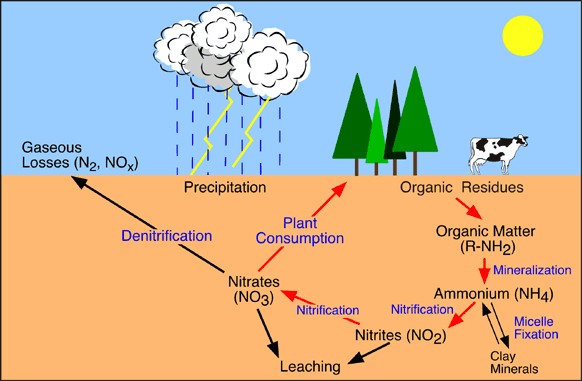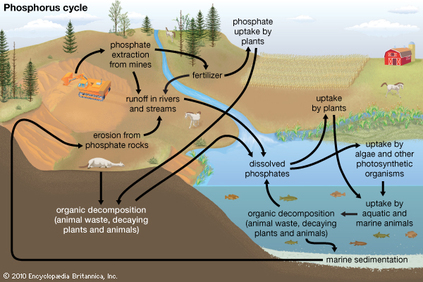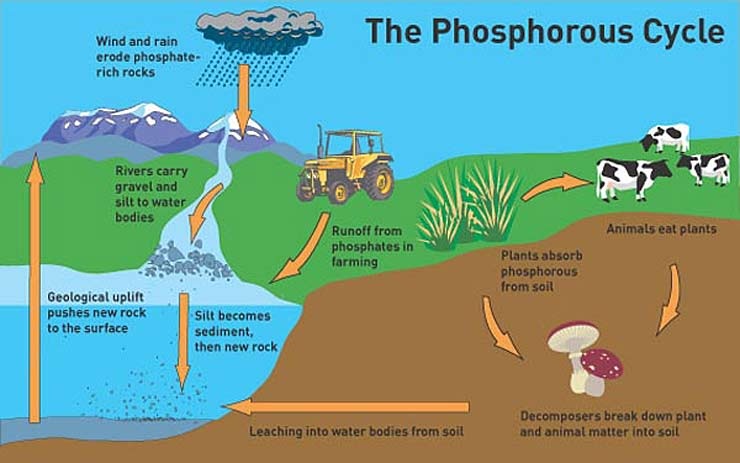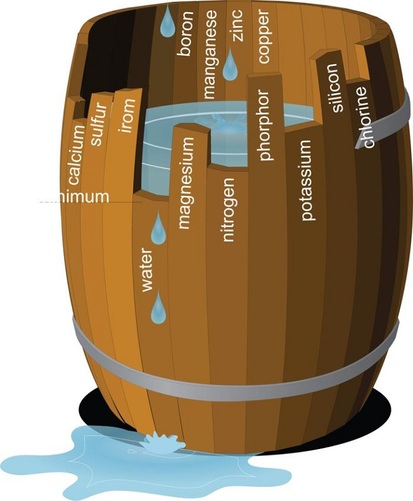Cycles of Matter
Recycling in the Biosphere
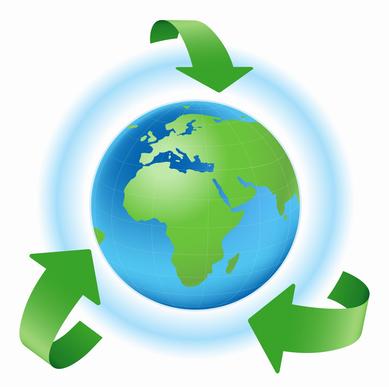
Matter moves in a different way than how energy moves. Thus, unlike the one-way flow of energy, matter is recycled within and between ecosystems. Elements that pass through from one organism to the other in closed loops is called biogeochemical cycles. This cycle involves biological process, geological process, and chemical process. Human activities also play a significant role in biogeochemical cycles. Matter that moves through this cycle is never destroyed or created, it is simply changed.
Biological Process: Consists of any and all activities performed by living organisms (breathing, burning, and eliminating waste products).
Geological process: Includes volcanic eruptions, the formation and breakdown of rocks, and major movements of matter within and below the surface of the Earth.
Chemical and Physical process: Include the formation of clouds and precipitation, the flow of running water, and the action of lightning.
Human activity: Activities carried out by humans that affect the cycle of matter on a global scale. This include mining, burning of fossil fuels, the clearing of land for building and farming, and the burning of forests.
Biological Process: Consists of any and all activities performed by living organisms (breathing, burning, and eliminating waste products).
Geological process: Includes volcanic eruptions, the formation and breakdown of rocks, and major movements of matter within and below the surface of the Earth.
Chemical and Physical process: Include the formation of clouds and precipitation, the flow of running water, and the action of lightning.
Human activity: Activities carried out by humans that affect the cycle of matter on a global scale. This include mining, burning of fossil fuels, the clearing of land for building and farming, and the burning of forests.
The Water Cycle
|
Water cycles embrace activities such as river flow, rain, and snow. Water continuously moves between the oceans, the atmosphere, and land--sometimes outside living organisms and sometimes inside them.
Water molecules usually enter the atmosphere as water vapor, a gas, when they evaporate from the ocean or other bodies of water. Cool water vapor carried by winds condense into tiny droplets that form clouds. When the droplets become large enough, they fall to the earth's surface as precipitation. Precipitation absorbed into the soil is called groundwater. Water that re-enters the atmosphere through transpiration or evaporation begins the cycle anew. |
Nutrient Cycles
Nutrients are the chemical substances that an organism needs to sustain life. Nutrients are crucial for living organisms to build tissues and carry out life functions. Also, nutrients pass through organism and the environment through biogeochemical cycles. Three cycles significant for life are the carbon, nitrogen, and phosphorus cycles.
The Carbon CycleCarbon is an important element in life. It is responsible for the making of living tissues, and ecosystems, to an extent that life on Earth is often described as "carbon-based life."
In a carbon cycle, carbon moves through the biosphere by continously exchanged between the atmosphere and oceans. Carbon often moves through physical and chemical processes that are taking place in the environment. Carbon dioxide (CO2) are taken in by plants during photosynthesis to be used for building carbohydrates. Carbohydrates can then be passed through food webs and food chains to consumers. CO2 is released into the atmosphere through decomposers, by human activities, and volcanic activity. |
The Nitrogen CycleNitrogen is important to all organisms because it allows the creation of amino acids, which are used to build nucleic acids that form DNA, RNA, and proteins. Nitrogen is abundant in the biosphere that it occurs naturally. For the record, 78% of the Earth's atmosphere is made up of Nitrogen gas (N2). Thus, Nitrogen flows in the biosphere through what is called the nitrogen cycle.
In a nitrogen cycle, bacteria convert nitrogen gas into ammonia, in a process known as nitrogen fixation. Bacterias also convert nitrogen into nitrates and nitrites. These forms of nitrogen can then be consumed by the primary producers to form nucleic acids and proteins. Consumers, afterwards, consume these nitrogens to make their own nitrogen-containing compound. Other bacterias obtain energy by converting nitrates into nitrogen gas, which is released into the atmosphere in a process called denitrification. Humans also add nitrogen to the biosphere through the manufacture and use of fertilizers. |
The Phosphorus CycleEven though Phosphorous is essential in making vital molecules such as DNA and RNA, phosphorous is not abundant in the biosphere. For that reason, phosphorous does not enter the atmosphere in significant amounts. Instead, phosphorous in the form of inorganic phosphate remains mostly on land, in the form of phosphate rock and soil minerals, and in the ocean, as dissolved phosphate and phosphate sediments. Organic phosphate moves through the food web, from produces to consumers, and to the rest of the ecosystem.
|
Nutrient Limitation
Nutrient limitation is the nutrient whose supply limits productivity. This scenario takes place can take place when with the abundant amount of sunlight present, the primary productivity of an ecosystem may be limited by the availability of nutrients. Since nutrient is very crucial in the biosphere, a short supply in a single essential nutrient may limit the primary productivity.
Nutrient Limitation in Soil: The growth of crop plants is typically limited by one or more nutrients that mist be taken up by plants through their roots. Micronutrients such as calcium, magnesium, iron, and sulfur are significant in relatively small amounts. Hence all nutrients cycles work together. One nutrient short in supply would interrupt the whole system of nutrients cycle.
Nutrient Limitation in Aquatic Ecosystems: Oceans are poor in nutrients compared to land. In the ocean and other bodies of saltwater, nitrogen is commonly the limiting nutrients. The limiting nutrient in streams, lakes, and bodies of freshwater, on the other hand, is typically phosphorus. In addition, heavy rains can also supply an aquatic ecosystem with a large input of a limiting nutrient. This phenomenon can lead to algal bloom, which is the dramatic increase in the amount of algae and other primary producers. This may interrupt the ecosystem as the amount of producers is significantly and astonishingly larger than the amount of consumers.
Nutrient Limitation in Soil: The growth of crop plants is typically limited by one or more nutrients that mist be taken up by plants through their roots. Micronutrients such as calcium, magnesium, iron, and sulfur are significant in relatively small amounts. Hence all nutrients cycles work together. One nutrient short in supply would interrupt the whole system of nutrients cycle.
Nutrient Limitation in Aquatic Ecosystems: Oceans are poor in nutrients compared to land. In the ocean and other bodies of saltwater, nitrogen is commonly the limiting nutrients. The limiting nutrient in streams, lakes, and bodies of freshwater, on the other hand, is typically phosphorus. In addition, heavy rains can also supply an aquatic ecosystem with a large input of a limiting nutrient. This phenomenon can lead to algal bloom, which is the dramatic increase in the amount of algae and other primary producers. This may interrupt the ecosystem as the amount of producers is significantly and astonishingly larger than the amount of consumers.

